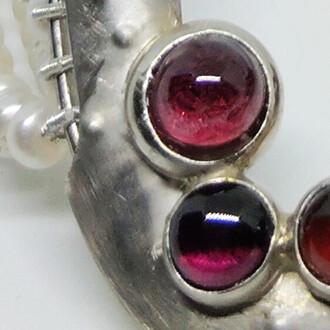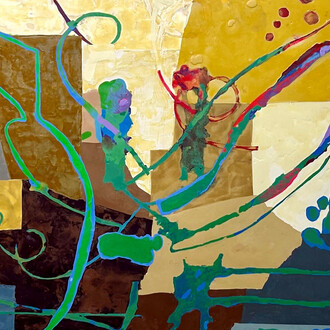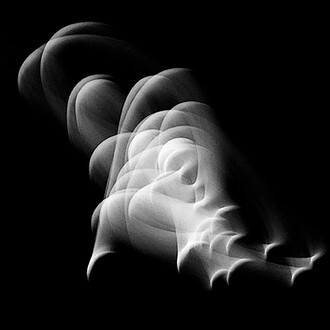Galleria Tiziana Di Caro will be hosting in its space the third solo exhibition by Giovanni Giaretta (Padova, 1983. He lives and works Amsterdam), entitled It takes a while to learn to talk the long language of the rocks, Saturday 15 February 2025 from 7.00 until 9.00 pm.
The title, It takes a while to learn to talk the long language of the rocks, is taken from the poem A request by Ursula K. Le Guin, from which Giaretta borrows the last verse, adding the letter"s" to the word "rock" and thus making the transition from singular to plural.
The exhibition includes a video, a sculpture, and a photographic series created between 2024 and 2025, and the title offers an important clue in order to understand the context in which Giaretta is moving. For some years, in fact, the artist has been fascinated by rocks and minerals.
Their composition, physical characteristics, as well as the genesis that each stone preserves, are observed as devices that generate visions, and are related to the history of moving images. Geology and its focus on the study of earth sciences is understood by the artist as a programmatic reference and as a creative pretext, through a continuous re-reading in a fantastic and evocative key.
The starting point of the exhibition lies in the suggestions Giaretta received from the collection of paintings on stones at the Opificio Delle Pietre Dure in Florence: "The painters of the sixteenth and seventeenth centuries were inspired by the natural forms of rocks and added painted figures, boats or trees, according to their interpretations of natural motifs and the visual suggestions of the stone. These artists did not approach the rocks with the intention of interpreting their geological or scientific meaning, but were rather inspired by the boundless imaginative and visual potential of the stones. Rocks as scenographies that trigger narratives".
And it is precisely on the relationship between natural, and therefore random image and constructed image that Giaretta has been working for some time now.
In Napoli, for example, he visited the Mineralogical Museum, observing various specimens of stones, discovering their history, genealogy, and admiring their shape, texture, and structure. In the video Shapeshifters (2025), we observe the characteristics just listed, through passages of light, transparencies, and reflections. The shots taken with different lights and color filters reveal the particular physical characteristics of the stones, which are highlighted and enhanced, sometimes transforming into scenographies, other times into real subjects. Some figures appear as shapes imprinted in transparent crystals and hidden presences in the fractures of the rocks; in the details, possible narratives appear and are preserved.
The signs left by sedimentation, metamorphosis, erosion, and pressures that have shaped the rocks are interpreted as phantoms: a paradox between immobility and continuous movement, a temporality intrinsic to the material that defines its appearance, a sort of suspended animation.
Thanks to the mise en scène, these phantoms appear and vanish before the lens. The editing, conceived as a "visual symphony" full of attractions for the eye, alters and transforms landscapes, colors, and movements, which are revealed as filmic illusions. Finally, a song composed of a few stanzas marks the transition from digital to analog film.
Lasting ghosts (2025) is a series of silver gelatin prints on baryta paper, created from thin sections of rocks. In optical mineralogy, a thin section is a laboratory preparation in which samples of rocks, minerals, or soil are made translucent in order to allow their analysis under a microscope. Giaretta is seduced by the fact that some of these slides are actually waste. Presenting imperfections, such as cracks or glue stains, they can no longer be used for scientific measurements.
These samples, rendered powerless for scientific research, open themselves to artistic language: they are printed as if they were actual photographic negatives, opening themselves to new possible imaginaries. The exhibition project is completed with the work titled Many hundreds of ma (2024), a sculpture that originates from an experience at the Museo Mineralogico of Napoli. Here, a small sculpture is preserved, attributed by some to Antonio Canova: a satyr's head with an incredible peculiarity —a quartz emerging from its mouth. It is said that Canova discarded it, unable to complete its features.
The soft physiognomy of the satyr contrasts with the geometry of the quartz, testifying to a fortuitous collaboration between artist and stone. Giaretta evokes this figure, scanning it and casting it in aluminum, slightly larger than the original, to enhance the uniqueness of this hybrid character.
The Ma in the title is the unit of time of one million years. The connotation of several hundred million years sounds like an infinite and indefinite time, eluding the calculations of duration itself, the very long one that characterizes the essence of a mineral. Ma in Italian also means 'but', referring in turn to the possible legends surrounding the satyr.
The exhibition continues at the Flip Project, a few metres from the gallery, at Via Giovanni Paladino 8. The project at Flip is an extension and further exploration of the exhibition It takes a while to learn to talk the long language of the rocks, with a specific focus on its writing practice. The works are in fact a visual elaboration of the notes, phrases and poems collected during the research.
Giovanni Giaretta was born in Padova in 1983. Since 2014 he's been living and working in Amsterdam. Since 2019, Giovanni Giaretta has held the position of lecturer in the Moving Images and Fine Art departments at the AKI Academy of Art & Design in Enschede, The Netherlands.
Giaretta’s work has been featured in exhibitions in Italy and abroad at diverse institutions and galleries such as: West, (Den Hague,NL), Palazzo Fortuny (Venice, IT); MAMbo (Bologna, IT); Galleria Tiziana Di Caro (Naples, IT); La Criée (Rennes, FR); De Appel (Amsterdam, NL); MACRO (Rome, IT); Musée Départemental d’Art Contemporain de Rochechouart (Rochechouart, FR); and Fondazione Sandretto Re Rebaudengo (Turin, IT). His films have been shown at the International Film Festival of Rotterdam (Rotterdam, NL) and IDFA (Amsterdam, NL), among other festivals and screenings.













